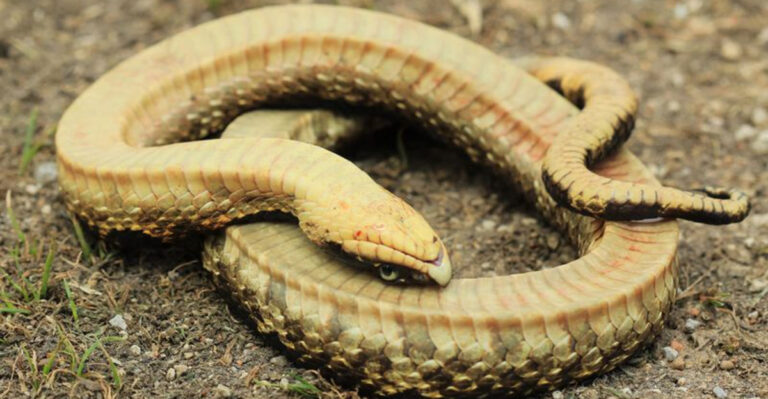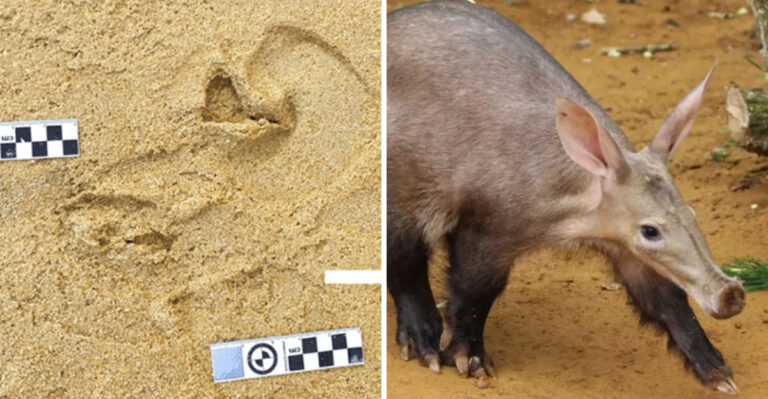Monsters Of The Deep: Enormous Creatures Scientists Found In The Abyss
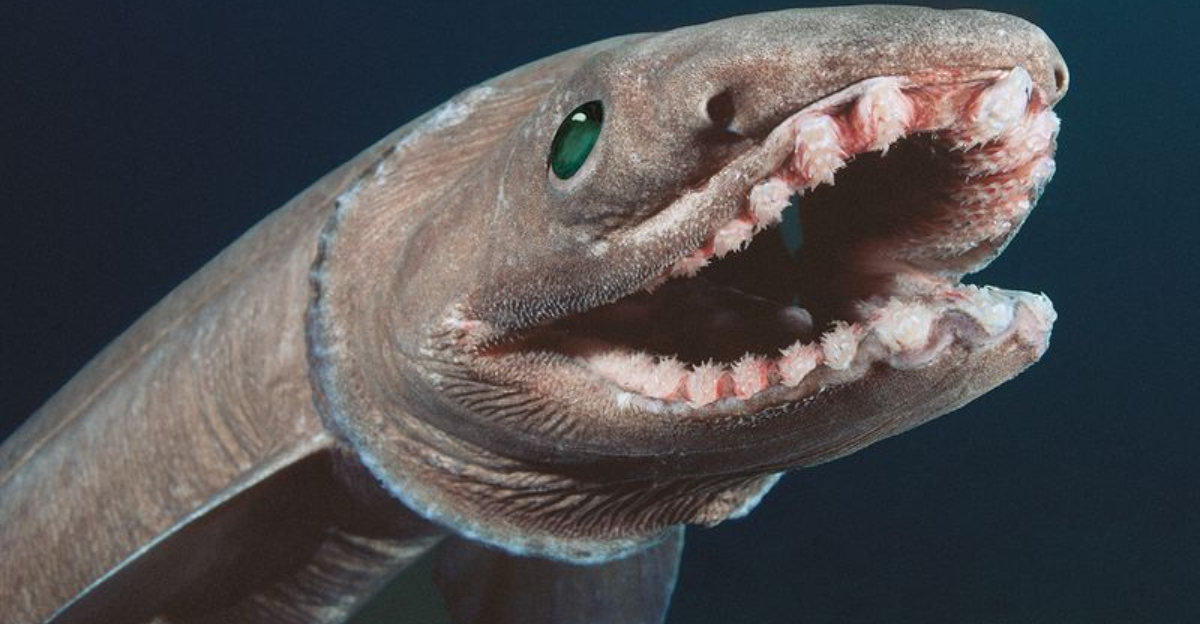
The ocean’s darkest depths hide some of Earth’s most bizarre life forms. Miles below the surface, where sunlight never reaches and pressure would crush a human instantly, strange creatures have evolved to survive the extreme conditions.
Scientists exploring these mysterious abyssal zones continue to discover massive animals that seem straight out of science fiction movies.
1. The Colossal Squid
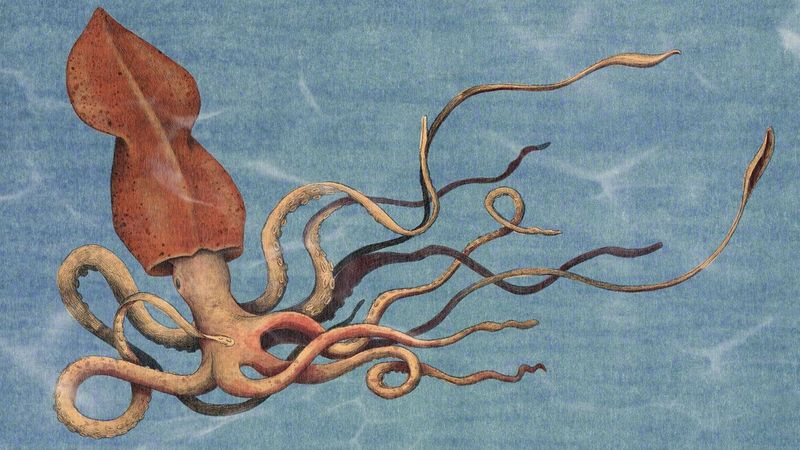
Weighing nearly a ton with eyes the size of dinner plates, the colossal squid rules the Antarctic waters. Unlike its giant squid cousin, this beast has swiveling hooks on its tentacles instead of simple suction cups.
Scientists caught a 33-foot specimen in 2007 that shocked marine biologists worldwide. Its beak – the hardest known natural material in the invertebrate world – can slice through prey with devastating efficiency.
Most fascinating is how this creature hunts in complete darkness, using bioluminescent organs to attract prey before snatching them with lightning-fast tentacle strikes.
2. The Megamouth Shark

First discovered in 1976 when one accidentally entangled itself in a Navy ship’s anchor, the megamouth shark remained Earth’s most elusive large fish for decades. Only about 100 sightings have ever been recorded of this 18-foot filter-feeding behemoth.
Unlike aggressive shark species, megamouths lazily cruise through deep waters with their enormous jaws agape, filtering plankton and jellyfish. Their silver-reflective mouths may attract prey in the darkness.
Scientists believe these sharks migrate vertically each day, following their planktonic food from depths of 15,000 feet up to 500 feet at night.
3. Giant Isopod
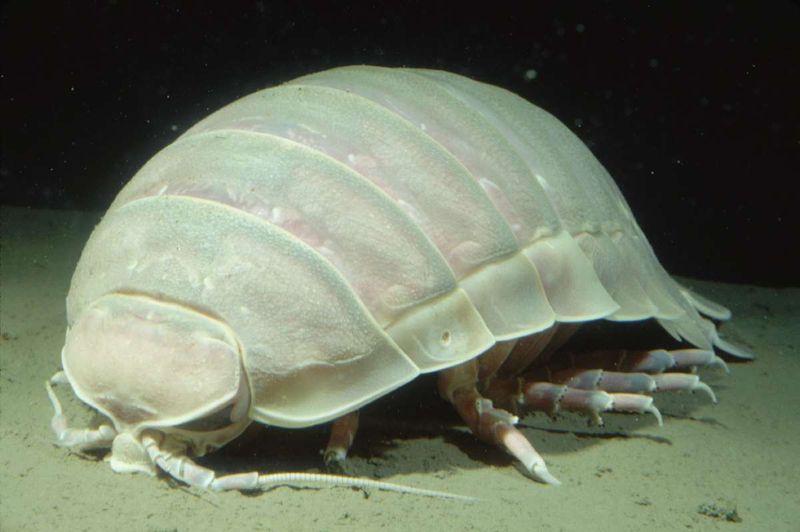
Imagine a roly-poly bug the size of a football! Giant isopods are essentially deep-sea cockroaches that have grown to monstrous proportions. Their armored exoskeletons protect them from the crushing pressure of the deep ocean trenches where they scavenge.
Food scarcity in the abyss means these creatures can go years between meals. One famous specimen at a Japanese aquarium refused food for over five years before finally passing away.
With seven pairs of legs and compound eyes that can detect the faintest light, these prehistoric-looking crustaceans have remained virtually unchanged for 160 million years.
4. The Frilled Shark

Swimming through the ocean depths with the same body design for 80 million years, the frilled shark is often called a “living fossil.” Its snake-like body stretches up to 6 feet long, lined with 300 trident-shaped teeth arranged in 25 rows.
Named for the frilly appearance of its six gill slits, this primitive shark ambushes prey by bending its body and striking like a snake. Scientists rarely observe them alive since they typically inhabit depths between 500 and 5,000 feet.
When a Japanese fisherman caught one in 2007, marine biologists were stunned by how perfectly it matched 80-million-year-old fossil records.
5. Japanese Spider Crab
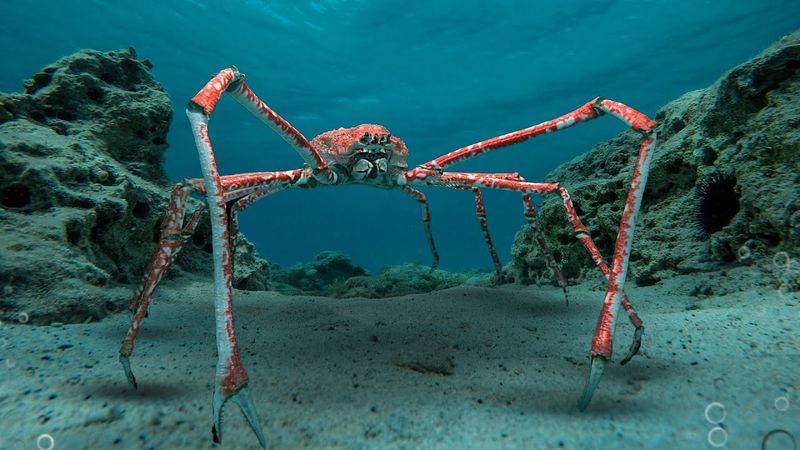
Sporting the longest legs in the arthropod world, Japanese spider crabs can measure 12 feet from claw to claw! These ocean giants lurk along the Pacific floor near Japan, where their mottled shells provide perfect camouflage against rocky seafloors.
Despite their menacing appearance, they’re generally peaceful scavengers that feed on dead animals and algae. Their incredible lifespan reaches 100 years in the wild – making them one of the longest-living arthropods on Earth.
When threatened, they can detach their own limbs to escape predators, later regenerating the lost appendage over several molting cycles.
6. The Goblin Shark
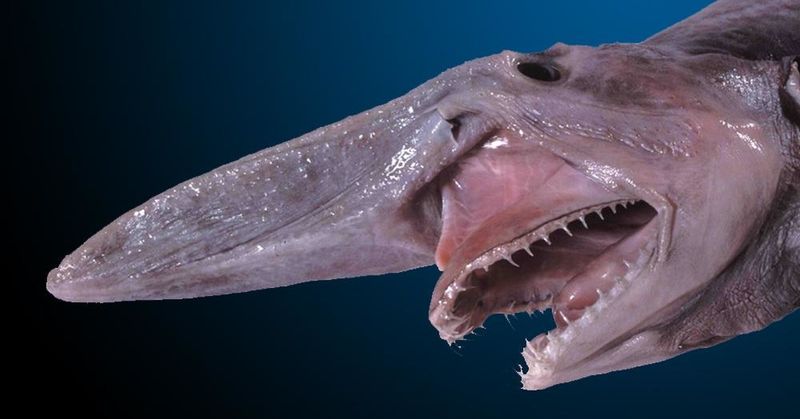
With a protruding sword-like snout and jaws that literally shoot forward to capture prey, the goblin shark looks like something from a nightmare. This rare deep-sea shark sports translucent pinkish-gray skin that reveals the blood vessels underneath.
Scientists believe its bizarre snout contains electrical sensors that detect prey in the pitch-black waters where it hunts. When it locates food, its jaw can extend nearly the length of its snout in less than a second – one of the fastest feeding mechanisms in the ocean.
Rarely seen alive, most specimens come from accidental deep-sea fishing catches around Japan, New Zealand and the Gulf of Mexico.
7. Giant Oarfish
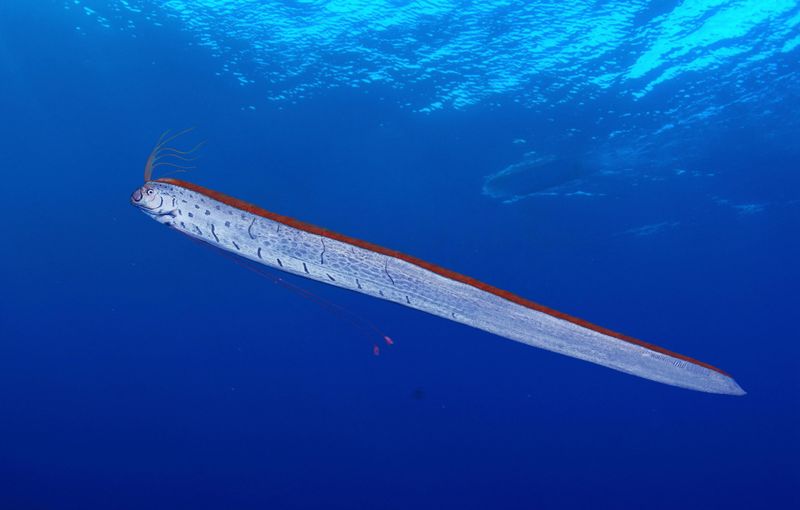
The longest bony fish alive today, the giant oarfish can reach lengths of 56 feet – about the size of a school bus! Its ribbon-like silver body undulates through the deep ocean like a sea serpent, leading many scientists to believe this creature inspired ancient sailors’ tales of sea monsters.
Though they typically live at depths of 3,000 feet, oarfish occasionally wash ashore before earthquakes, fueling Japanese legends that they can predict seismic activity. Their dorsal fin runs the entire length of their body, creating a magnificent red crest.
Despite their intimidating size, oarfish feed on tiny krill and have no teeth.
8. The Vampire Squid
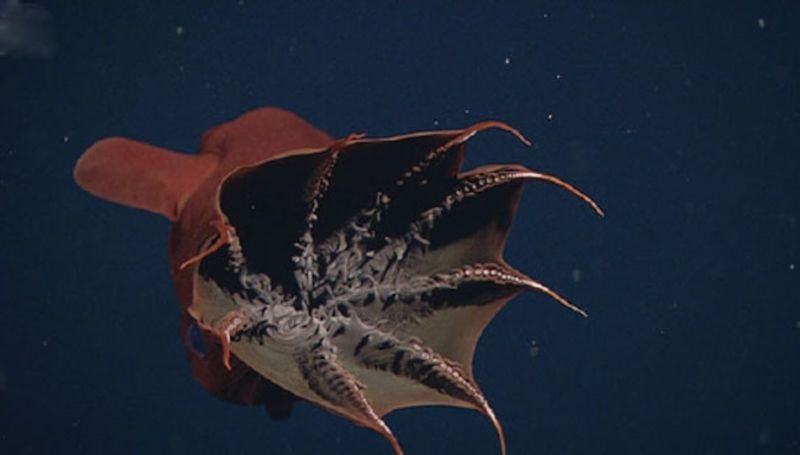
Neither a true squid nor an octopus, the vampire squid lives in the ocean’s “oxygen minimum zone” where few predators can survive. Its name comes from the cape-like webbing between its arms that resembles Dracula’s cloak, which it can wrap around itself when threatened.
Unlike its name suggests, it doesn’t suck blood. Instead, it deploys bioluminescent mucus clouds that glow blue in the darkness! This distracts predators while the vampire squid escapes.
Perhaps most remarkable is its ability to turn its body inside-out, transforming into a spiky ball when threatened – earning it the scientific name Vampyroteuthis infernalis or “vampire squid from hell.”
9. The Fangtooth
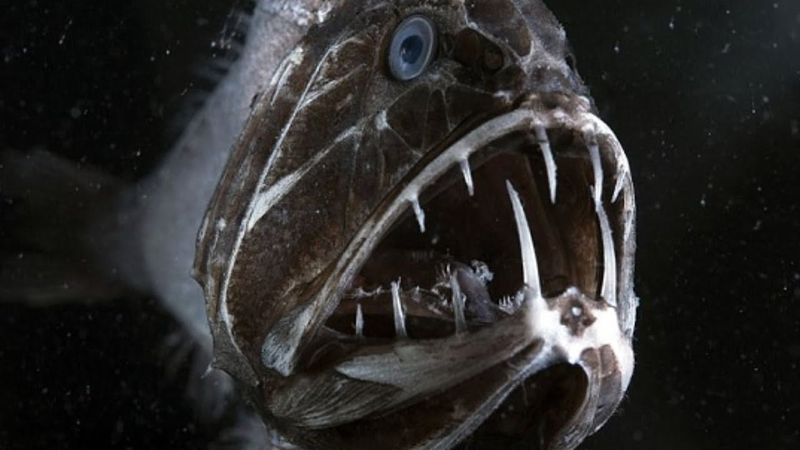
Pound for pound, the fangtooth fish has the largest teeth of any ocean creature compared to its body size. Despite measuring only 6 inches long, its dagger-like fangs are so massive that special pockets in the roof of its mouth allow its jaws to close!
Adapted for the extreme pressure of depths exceeding 16,000 feet, these fish have incredibly thick, reinforced bones. Their tiny eyes barely function in the perpetual darkness where they hunt.
Young fangtooth fish look completely different from adults, transforming dramatically as they mature and descend from shallow waters to the crushing depths they call home.
10. The Giant Tube Worm
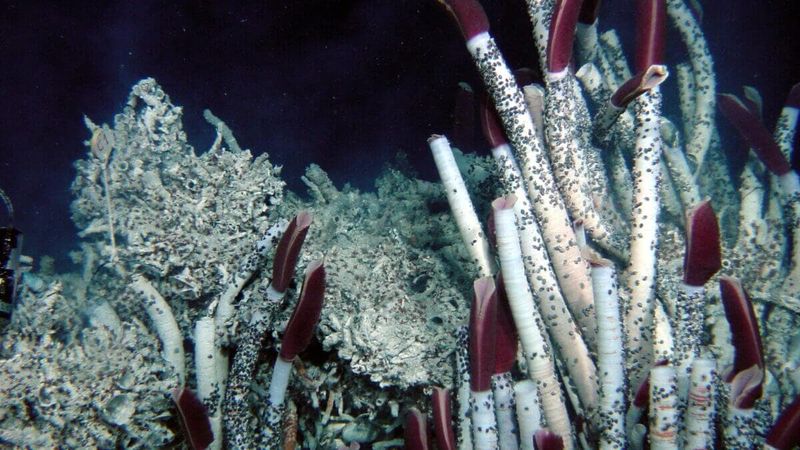
Towering up to 8 feet tall near hydrothermal vents, giant tube worms survive in water hot enough to melt lead and filled with toxic chemicals. These incredible invertebrates have no mouth, digestive system, or eyes – instead housing billions of bacteria inside their bodies that convert toxic vent chemicals into food.
Their bright red plumes contain hemoglobin (like human blood) that absorbs hydrogen sulfide and oxygen for their bacterial symbionts. When threatened, they can instantly retract these feathery plumes into their protective white tubes.
Scientists were baffled upon discovering these worms grow nearly 3 feet per year – making them some of the fastest-growing invertebrates on Earth.
11. The Dumbo Octopus
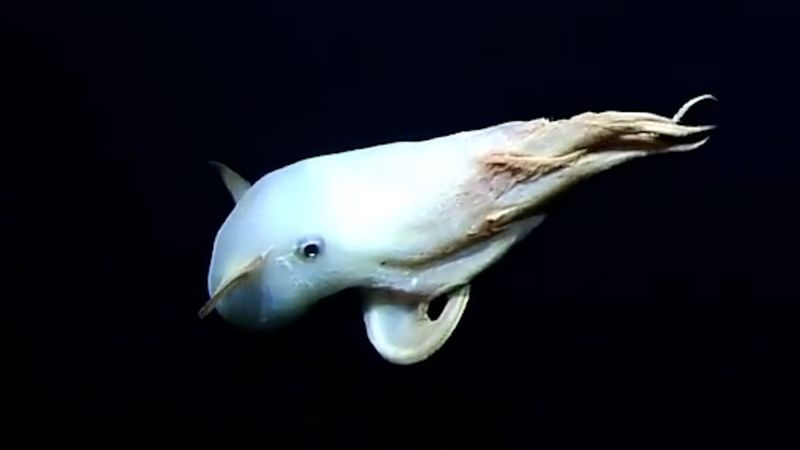
Named after Disney’s flying elephant, the dumbo octopus uses ear-like fins to “fly” through the deepest ocean waters ever known to contain cephalopods. Scientists have found these adorable creatures at crushing depths of 23,000 feet – nearly as deep as Mount Everest is tall!
Unlike most octopuses that hunt and scavenge, dumbo octopuses hover above the seafloor and pounce on prey, swallowing them whole. Their semi-transparent bodies range from white to various shades of red, depending on species.
Female dumbos carry their eggs with them until they hatch rather than guarding a nest, allowing the babies to immediately fend for themselves.
12. The Barreleye Fish

Gazing upward through its transparent head, the barreleye fish hunts with tubular, barrel-shaped eyes that can rotate to look forward when needed. Its transparent dome is filled with fluid, protecting its delicate eyes and allowing 360-degree vision.
Scientists were stunned in 2009 when they first observed a live specimen with its head intact. Previous specimens had their delicate transparent shields damaged during collection.
Living at depths between 2,000-2,600 feet, these fish hover motionless in the darkness, detecting the silhouettes of potential prey against the faint light filtering from above. Their green-tinted eyes may help filter the bioluminescence of jellyfish they hunt.
13. The Black Swallower
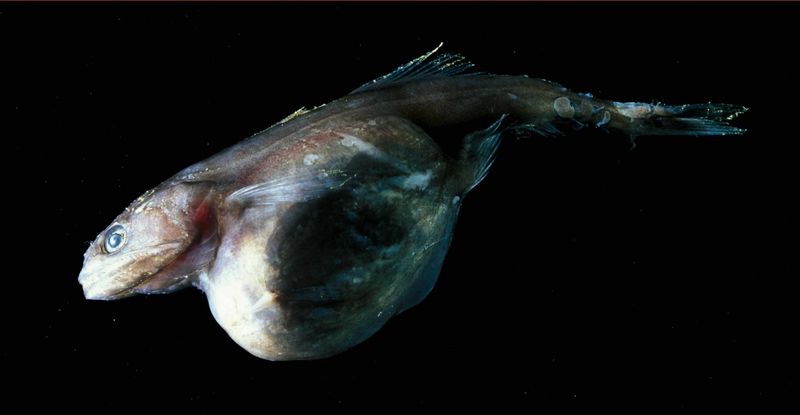
Don’t let its small size fool you – the black swallower can devour fish more than twice its length and ten times its mass! This 10-inch deep-sea predator has an enormously distensible stomach that hangs below its body like a pelican’s pouch when full.
Found at depths between 3,000-9,000 feet, these ambitious eaters sometimes bite off more than they can chew. Scientists occasionally find them floating dead on the surface, their stomachs burst from gases released by their partially digested meals.
Their massive jaws feature backward-pointing teeth ensuring that once prey enters, escape is impossible as the black swallower works to swallow its outsized meal.



